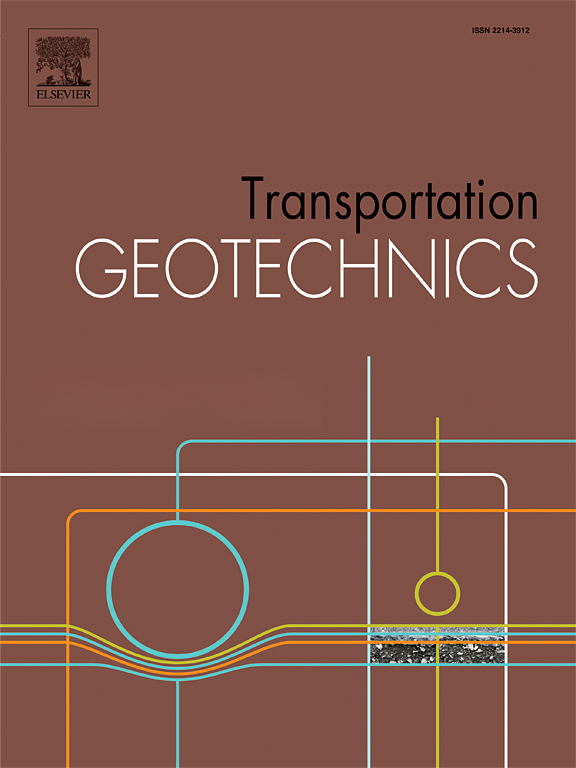Site-specific soil water characteristic curve prediction with extremely scarce data using data-driven hierarchical Bayesian model
IF 4.9
2区 工程技术
Q1 ENGINEERING, CIVIL
引用次数: 0
Abstract
The soil-water characteristic curve (SWCC) is fundamental for understanding the hydro-mechanical behavior of unsaturated soils and is widely applied in various fields. However, determining the SWCC through laboratory experiments is time-consuming. As a result, developing efficient prediction models for SWCC is highly valuable for timely decision-making. Existing methods face fundamental limitations: Bayesian approaches rely on predefined empirical models that may fail to fully capture soil–water interactions, while current data-driven machine learning models struggle to handle extremely sparse measurements, incomplete inputs and uncertainty quantification. To address these challenges, this study introduces a data-driven hierarchical Bayesian model (HBM) that integrates an indirect database with extremely sparse site-specific measurements (e.g., fewer than four data points) to reliably predict the SWCC. The HBM operates in two stages where hyperparameters are first estimated from the database to establish a prior model, and then in the inference stage, the prior model is refined through transfer learning to generate a quasi-site-specific posterior model. Through conjugate priors and Gibbs sampling, this approach enables robust SWCC predictions with severely limited data and/or incomplete soil parameters. A comprehensive drying SWCC database with ten essential soil parameters is compiled to train and validate the model through three case studies and leave-one-site-out cross-validation. The results show that the HBM outperforms widely used machine learning models, such as Artificial Neural Networks and Extreme Gradient Boosting, offering a robust solution for SWCC prediction under site-specific data constraints.
基于数据驱动层次贝叶斯模型的极稀缺数据下的立地土壤水分特征曲线预测
土-水特征曲线(SWCC)是了解非饱和土水力学特性的基础,在各个领域有着广泛的应用。然而,通过实验室实验确定SWCC是耗时的。因此,建立有效的SWCC预测模型对及时决策具有重要意义。现有方法面临着根本的局限性:贝叶斯方法依赖于预定义的经验模型,可能无法完全捕获土壤-水相互作用,而当前数据驱动的机器学习模型难以处理极其稀疏的测量、不完整的输入和不确定性量化。为了应对这些挑战,本研究引入了数据驱动的分层贝叶斯模型(HBM),该模型将间接数据库与极其稀疏的特定地点测量(例如,少于4个数据点)集成在一起,以可靠地预测SWCC。HBM分为两个阶段,首先从数据库中估计超参数,建立先验模型,然后在推理阶段,通过迁移学习对先验模型进行细化,生成准特定站点的后验模型。通过共轭先验和吉布斯采样,该方法可以在数据严重受限和/或土壤参数不完整的情况下实现稳健的SWCC预测。编制了包含10个基本土壤参数的综合干燥SWCC数据库,通过三个案例研究和留一站交叉验证对模型进行了训练和验证。结果表明,HBM优于广泛使用的机器学习模型,如人工神经网络和极端梯度增强,为特定地点数据约束下的SWCC预测提供了强大的解决方案。
本文章由计算机程序翻译,如有差异,请以英文原文为准。
求助全文
约1分钟内获得全文
求助全文
来源期刊

Transportation Geotechnics
Social Sciences-Transportation
CiteScore
8.10
自引率
11.30%
发文量
194
审稿时长
51 days
期刊介绍:
Transportation Geotechnics is a journal dedicated to publishing high-quality, theoretical, and applied papers that cover all facets of geotechnics for transportation infrastructure such as roads, highways, railways, underground railways, airfields, and waterways. The journal places a special emphasis on case studies that present original work relevant to the sustainable construction of transportation infrastructure. The scope of topics it addresses includes the geotechnical properties of geomaterials for sustainable and rational design and construction, the behavior of compacted and stabilized geomaterials, the use of geosynthetics and reinforcement in constructed layers and interlayers, ground improvement and slope stability for transportation infrastructures, compaction technology and management, maintenance technology, the impact of climate, embankments for highways and high-speed trains, transition zones, dredging, underwater geotechnics for infrastructure purposes, and the modeling of multi-layered structures and supporting ground under dynamic and repeated loads.
 求助内容:
求助内容: 应助结果提醒方式:
应助结果提醒方式:


